And now comes my review of the Famous S&W Model 29 Model 29 | Smith & Wesson (smith-wesson.com). More specifically, the Model 29-6. Many of you know that I grew up with revolvers. Back in the day, it is no secret that my friend, the late Denny Reichard and I wore many of these 29’s out shooting hard cast lead bullets on top of a case full of 2400. As a side note he would chastise me for liking the .41 Magnum as it was a wussy caliber. I can’t print what he really called it then. Look for a review on the Model 57 right here on these pages. So I continued to wear out some Model 29”s as we shot bowling pins and some action matches as well with the 44 Magnums.
I carried the 4 inch Model 29 for close to 20 years in northern Indiana and never once did I whine about it being too heavy or lacking in street firepower. My thought has always been if you had to complain about how uncomfortable or heavy a gun is to carry all the time, then perhaps one should just as well stay home and watch Dancing with the Stars. When you shoot full house loads in these N Frame revolvers, you learn a few things about flinch, trigger control recovery and follow through. I remember staying right up with the semi auto extended magazine bowling pin shooters as I would often clear my table in 5 rounds. I only had to hit the 5 pins once so I usually had a round left over at the end of the heat. Back then, the time did not stop until the pin was on the ground and my 240 Grainers sent them to the earth with authority.
Now this did not come without a price on the Model 29. Those of us taking shooting seriously soon found out that the Model 29 was a tiny bit under engineered in my opinion for a steady diet of thousands of 44 Magnums. Frames stretched, end shake happened, revolver became out of time, cylinder back up on recoil, and erosion took it’s toll. Keeping them running under this much stress required us to learn revolver smithing on the cuff. Trying some 8 and 10 inch versions of the Model 29, -1, -2, -3, -4, and -5’s for IHMSA IHMSA News - Welcome to IHMSA shooting did not help much. The factory stood behind the guns but you had to speak up to get them refurbished. It was not until the Model 29-6 that they engineered a trigger activated steel locking bolt and a few other enhancements to bring the 29 to a better performance. As a side note ironically, the Model 57 in .41 Magnum, never needed this enhancement as it was built with the same materials but with only .410 holes instead of .429 holes in the chambers and barrel providing more steel in the handgun. In my humble opinion, I feel, by accident, the Model 57 is the true Magnum in N Frames as I have yet to wear one out.
I remember discussing this with an Editor of Popular gun magazine and because of advertising and such, he would never agree to this for his readers. Well, I don’t have bosses or advertisers and can say it like I see it. The Model 29 thru 29-5’s were the best 44 Specials ever built.
This 29-6 is one of my favorites and I can reliably shoot magnums in it. Before I put on my signature package, I make sure that the production gun is in spec. I check the timing and forgings to make sure all is kosher. I shoot the gun for accuracy and look for any warranty issues. I measure the cylinder chambers by dropping bullets of a known size through the charge holes. When it passes my tests, I would then send it in to my personal friend at Smith and Wesson. Vito (retired now) would go though the gun and hand fit the action for me. With Vito knowing my attention to detail, he would then chamfer the front edges of the cylinder for a finished look that made the gun easier to reholster and reminiscent of pre war manufacturing. Also, the right side of the ejector housing needed beveled as well like they used to do pre 80’s before they started eliminating craftsmen work. The barrel was inspected again for the centerline and the sights were registered right down on the frame for a POI at 25 yards right on with standard factory ammo. You can tell a lot about the assembly of your revolver by referencing the junction of the barrel where it goes into the frame. I have seen many that were misfit. The gun was hand polished and finished in a separate blue operation from production.
The grips on this are Kim Ahrends Ahrends Grips : Home (ahrendsgripsusa.com) Maple with a screw that is blued to match the frame of the gun. Just another attention to detail. I think Kim has retired now and hope the company is picked up by someone that cares as much as this family did about their product. Miss Judy was a true friend indeed.
Mounting optics on the Smith and Wesson revolver could never be easier or as streamlined as they make it today. The top strap is drilled and tapped with 3 screw holes for mounting a scope or dot. One must remove the rear sight to do this but for balance and shootability, it is the way I prefer it. Mounting EER scopes out on the barrel on handguns or rifles destroys the balance in my opinion. Heavier Optics belong midship or behind the receiver at best but that is just me I guess.
Recoil of the 44 Magnum is manageable with a trained shooter. Much like the noob needs an easy racking slide, or unexperienced Lever Loaders rip their fingers off, an untrained shooter can have a bad experience with a 44 Magnum. It is a learning curve that many just give up on. It does take a little more work to learn how to do these things correctly. I have and continue to smoke Alliant 2400 in my 44 magnums as case density is good and velocities are consistent. My favorite bullet is the Remington 240 Gr JSP. I am not sure what I will go to if they ae not manufactured by the new Remington Ammo Company when I run out. I have also shot lead wadcutters in the Model 29 for accuracy testing, revolver training and once in awhile bullseye. It seems I have always kept a box of Buffalo Bore on hand as well as sometimes I like a little more muscle.
Speaking of more, one year while visiting some friends at the plant in Springfield, I was invited to shoot the new XFrame 500 S&W. The gun was just in it’s roll out and the factory was excited as they spent a lot of money on this this launch. I remember getting a few funny looks when I said I thought it was a little over the top for a handgun. There was even some chin music about this being developed for rifle calibers. I shot the massive gun with a small handle and citing diminished returns, it made me appreciate the finesse of the N Frame. For me, it made more sense to just carry a rifle if I needed that much power. After all, there is only one level of dead. The 44 Magnum in it’s standard load develops an average of 900FTLB of energy and is very flexible up or down from this scale.
The Model 29-6 is a forged carbon steel frame and cylinder. Internals were steel as well however, the switch to first gen MIM had begun in some of these triggers and cylinder releases. First gen MIM did not meet my standards at that time and so I replaced them with a Color Casehardend Carbon Steel Trigger and an older cylinder release made of steel. It was interesting that the all steel cylinder release outweighed the MIM part by almost 50%. I have enjoyed the 629’s as well as the stainless properties make for less chance of rust, however stainless feels porous and spongy to me as carbon steel has the density that I like in looks and feel. There is less felt vibration when the hammer hits the frame of a carbon gun over stainless. I feel the same for knife blades Just me. In this world of shortcuts and variances I see Stainless and other man made elements resembling metal and state of the art polymers replacing the carbon blued gun altogether. After all, todays line up of paint/coating colors for guns is an easier/less costly way to finish a product and more resistant to the elements than bluing..
One can tell some of the engineering changes Smith made through out the 29 run. Along about the -4 they started elongating the cylinder stop notch. It easy to tell the newer model by comparing the notch to an older one. Yoke retention screws and designs have been enhanced as well. This was good of S&W to address this product line improvement as the shooter became more aware. Cylinder back up, spitting lead and better end shake resistance have all been addressed in the newer models through engineering changes for the better. No more days of taking the chance that only a few would complain and sweep it under the rug. Sound familiar Colt’s Mfg?
See Part 2
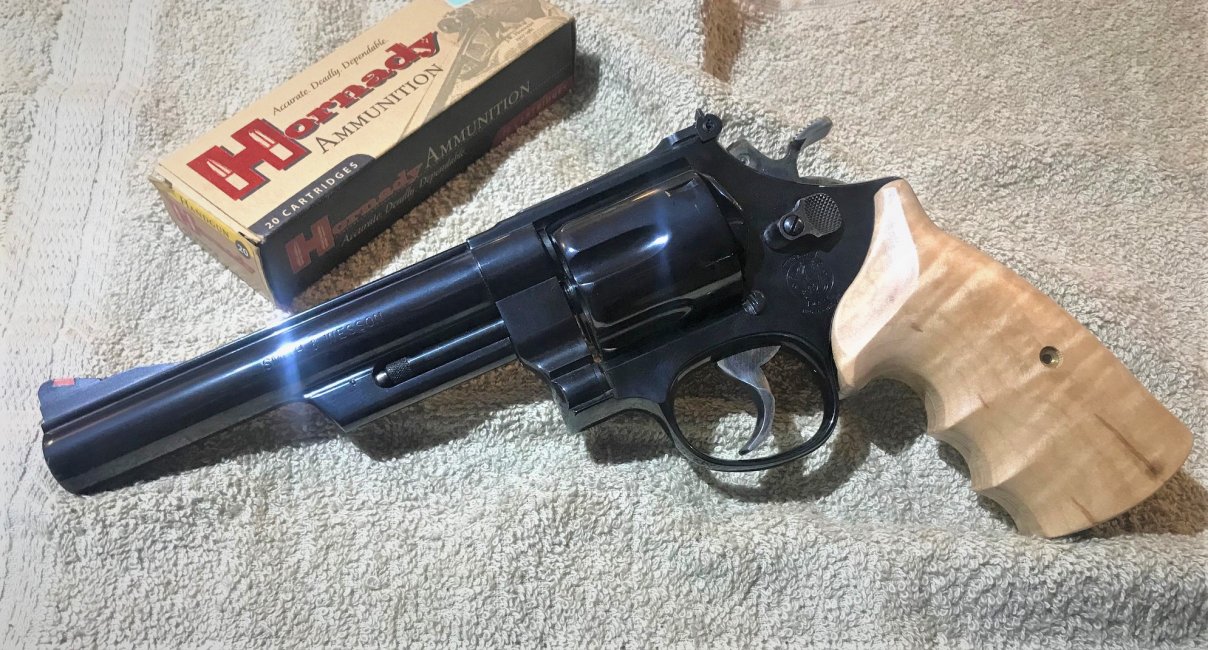
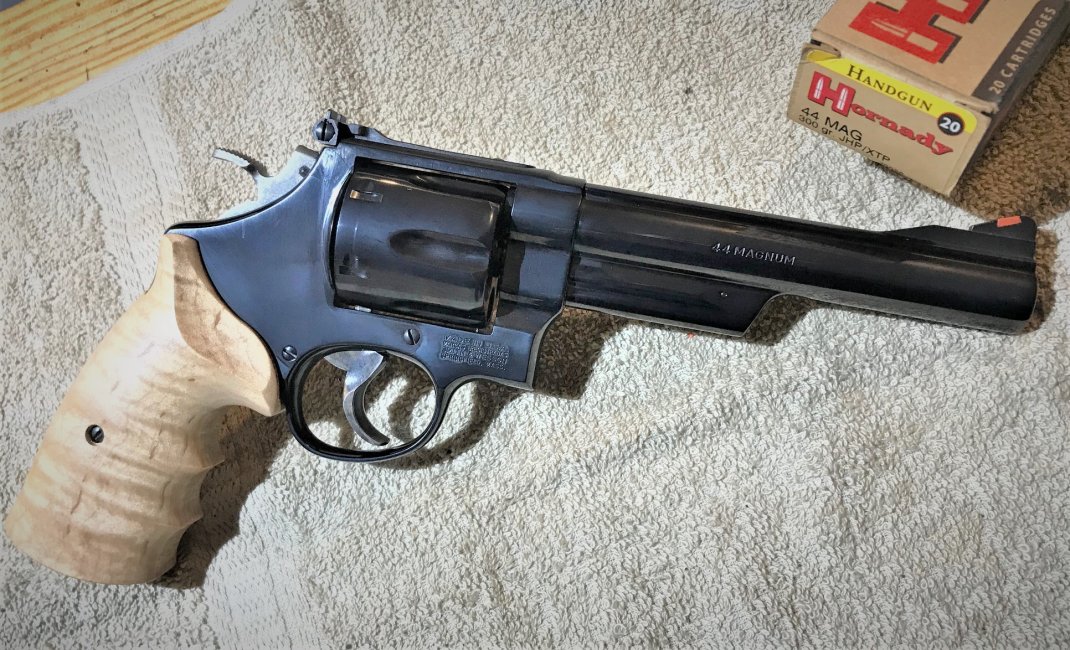
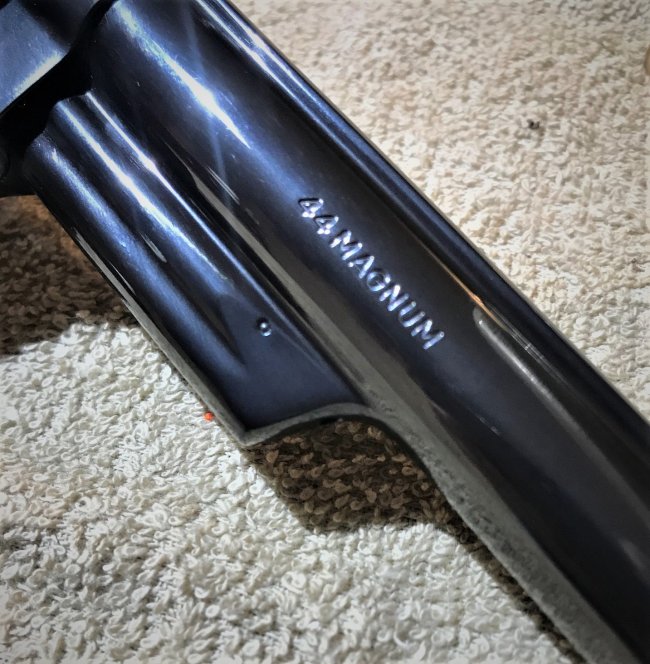
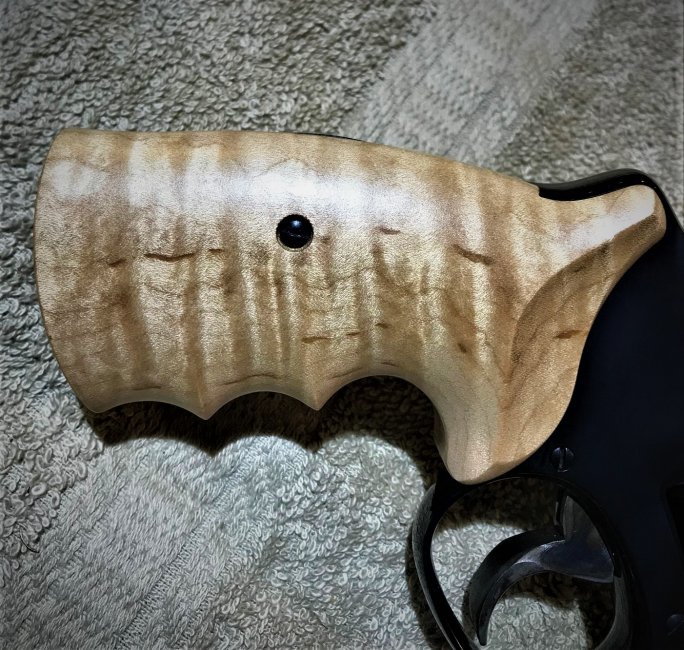
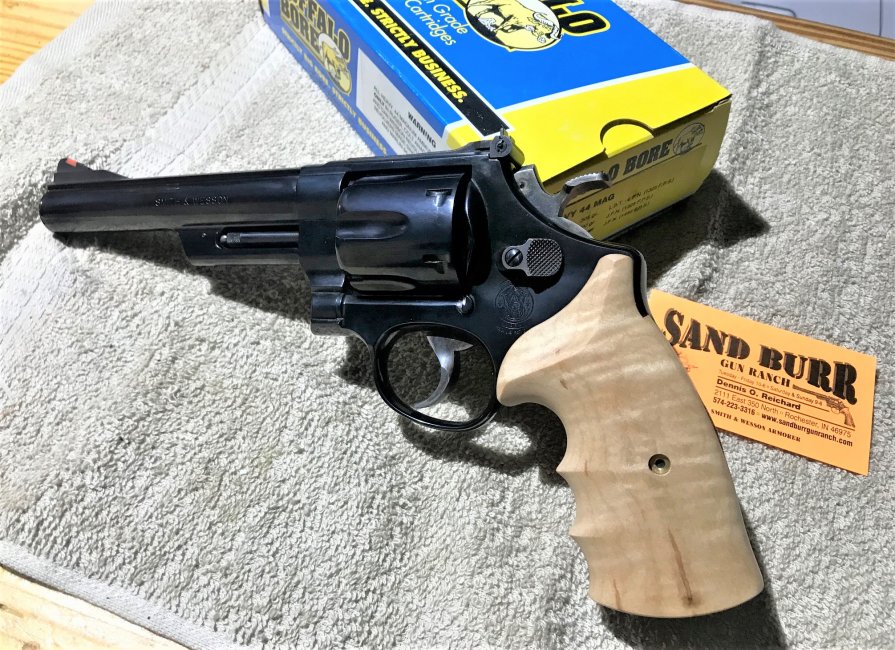
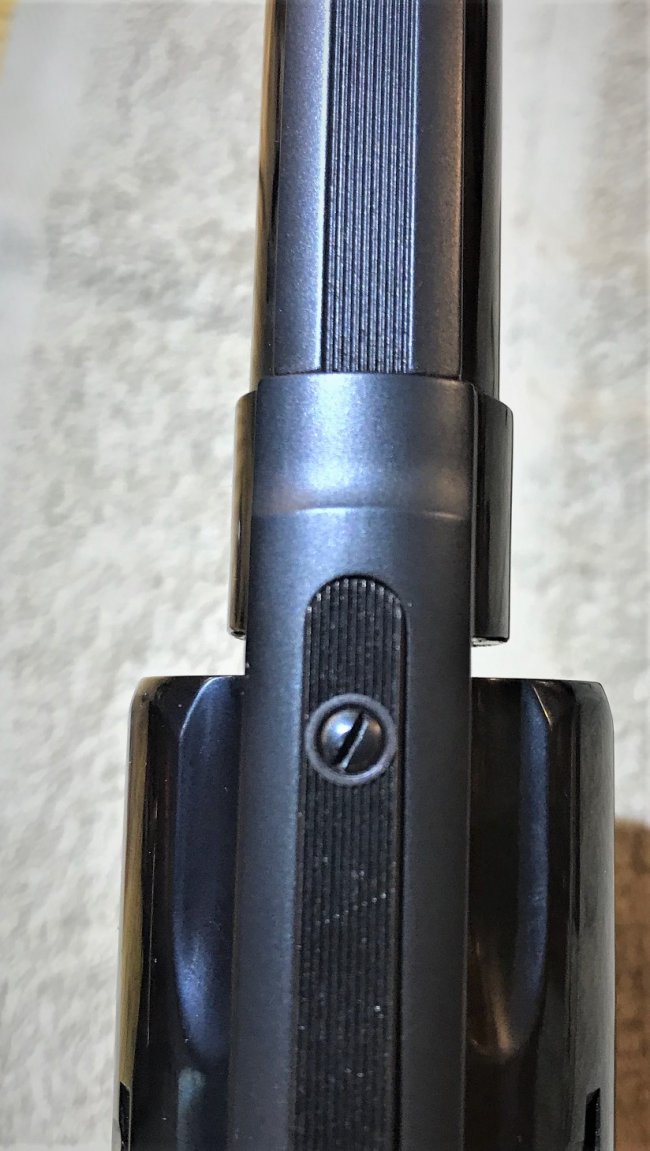
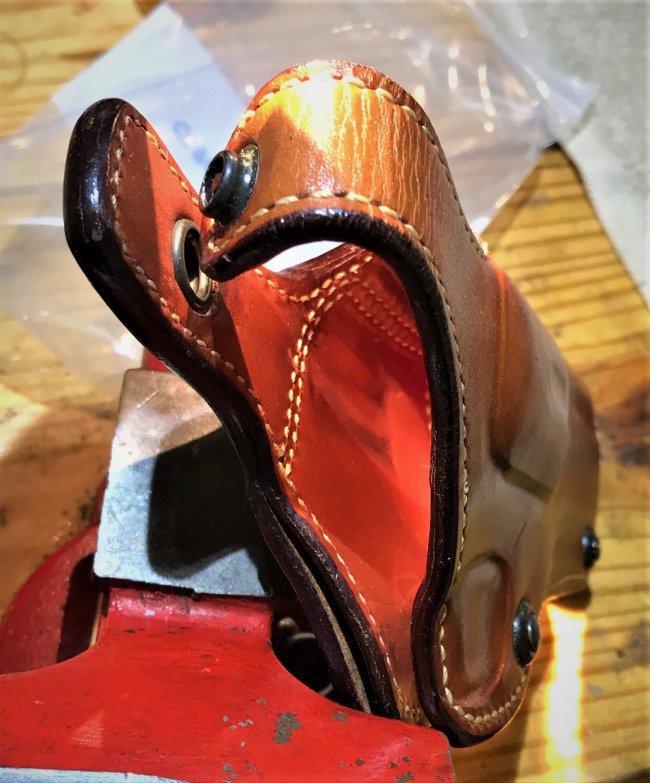
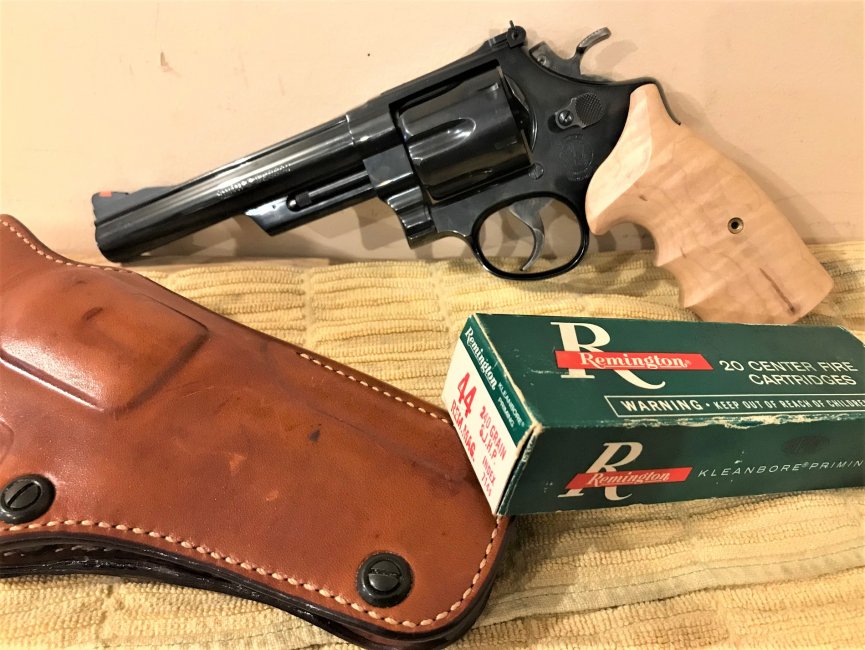
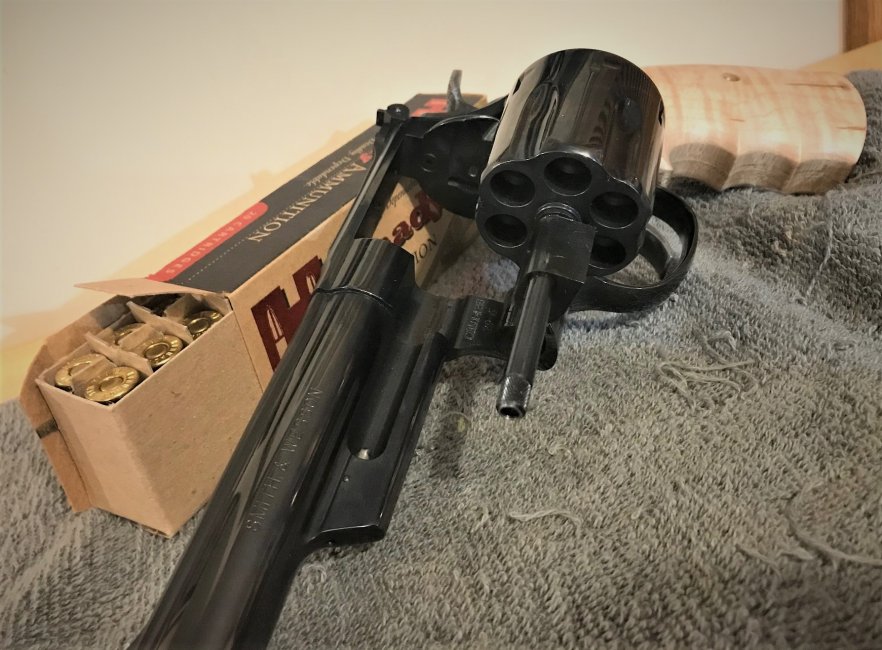
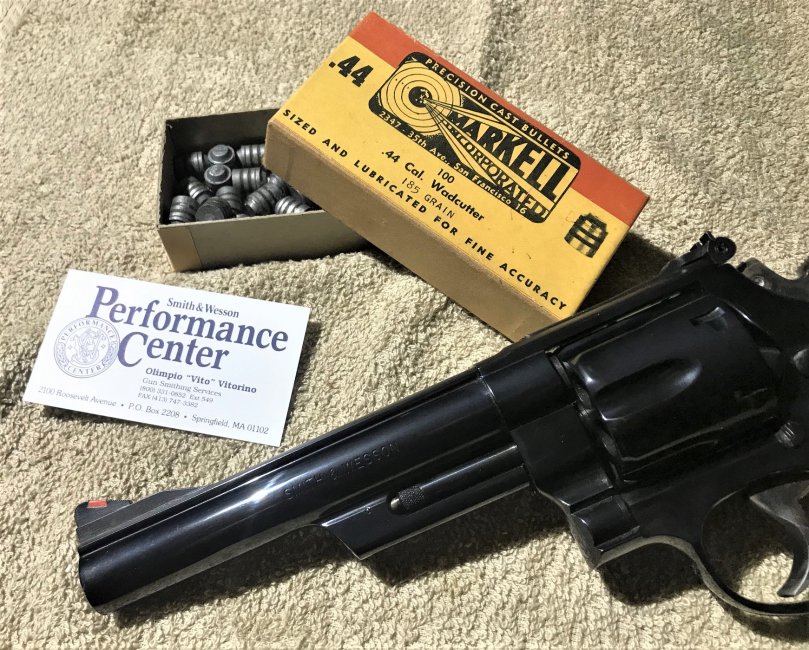
*******************************
Original Thread Here
I carried the 4 inch Model 29 for close to 20 years in northern Indiana and never once did I whine about it being too heavy or lacking in street firepower. My thought has always been if you had to complain about how uncomfortable or heavy a gun is to carry all the time, then perhaps one should just as well stay home and watch Dancing with the Stars. When you shoot full house loads in these N Frame revolvers, you learn a few things about flinch, trigger control recovery and follow through. I remember staying right up with the semi auto extended magazine bowling pin shooters as I would often clear my table in 5 rounds. I only had to hit the 5 pins once so I usually had a round left over at the end of the heat. Back then, the time did not stop until the pin was on the ground and my 240 Grainers sent them to the earth with authority.
Now this did not come without a price on the Model 29. Those of us taking shooting seriously soon found out that the Model 29 was a tiny bit under engineered in my opinion for a steady diet of thousands of 44 Magnums. Frames stretched, end shake happened, revolver became out of time, cylinder back up on recoil, and erosion took it’s toll. Keeping them running under this much stress required us to learn revolver smithing on the cuff. Trying some 8 and 10 inch versions of the Model 29, -1, -2, -3, -4, and -5’s for IHMSA IHMSA News - Welcome to IHMSA shooting did not help much. The factory stood behind the guns but you had to speak up to get them refurbished. It was not until the Model 29-6 that they engineered a trigger activated steel locking bolt and a few other enhancements to bring the 29 to a better performance. As a side note ironically, the Model 57 in .41 Magnum, never needed this enhancement as it was built with the same materials but with only .410 holes instead of .429 holes in the chambers and barrel providing more steel in the handgun. In my humble opinion, I feel, by accident, the Model 57 is the true Magnum in N Frames as I have yet to wear one out.
I remember discussing this with an Editor of Popular gun magazine and because of advertising and such, he would never agree to this for his readers. Well, I don’t have bosses or advertisers and can say it like I see it. The Model 29 thru 29-5’s were the best 44 Specials ever built.
This 29-6 is one of my favorites and I can reliably shoot magnums in it. Before I put on my signature package, I make sure that the production gun is in spec. I check the timing and forgings to make sure all is kosher. I shoot the gun for accuracy and look for any warranty issues. I measure the cylinder chambers by dropping bullets of a known size through the charge holes. When it passes my tests, I would then send it in to my personal friend at Smith and Wesson. Vito (retired now) would go though the gun and hand fit the action for me. With Vito knowing my attention to detail, he would then chamfer the front edges of the cylinder for a finished look that made the gun easier to reholster and reminiscent of pre war manufacturing. Also, the right side of the ejector housing needed beveled as well like they used to do pre 80’s before they started eliminating craftsmen work. The barrel was inspected again for the centerline and the sights were registered right down on the frame for a POI at 25 yards right on with standard factory ammo. You can tell a lot about the assembly of your revolver by referencing the junction of the barrel where it goes into the frame. I have seen many that were misfit. The gun was hand polished and finished in a separate blue operation from production.
The grips on this are Kim Ahrends Ahrends Grips : Home (ahrendsgripsusa.com) Maple with a screw that is blued to match the frame of the gun. Just another attention to detail. I think Kim has retired now and hope the company is picked up by someone that cares as much as this family did about their product. Miss Judy was a true friend indeed.
Mounting optics on the Smith and Wesson revolver could never be easier or as streamlined as they make it today. The top strap is drilled and tapped with 3 screw holes for mounting a scope or dot. One must remove the rear sight to do this but for balance and shootability, it is the way I prefer it. Mounting EER scopes out on the barrel on handguns or rifles destroys the balance in my opinion. Heavier Optics belong midship or behind the receiver at best but that is just me I guess.
Recoil of the 44 Magnum is manageable with a trained shooter. Much like the noob needs an easy racking slide, or unexperienced Lever Loaders rip their fingers off, an untrained shooter can have a bad experience with a 44 Magnum. It is a learning curve that many just give up on. It does take a little more work to learn how to do these things correctly. I have and continue to smoke Alliant 2400 in my 44 magnums as case density is good and velocities are consistent. My favorite bullet is the Remington 240 Gr JSP. I am not sure what I will go to if they ae not manufactured by the new Remington Ammo Company when I run out. I have also shot lead wadcutters in the Model 29 for accuracy testing, revolver training and once in awhile bullseye. It seems I have always kept a box of Buffalo Bore on hand as well as sometimes I like a little more muscle.
Speaking of more, one year while visiting some friends at the plant in Springfield, I was invited to shoot the new XFrame 500 S&W. The gun was just in it’s roll out and the factory was excited as they spent a lot of money on this this launch. I remember getting a few funny looks when I said I thought it was a little over the top for a handgun. There was even some chin music about this being developed for rifle calibers. I shot the massive gun with a small handle and citing diminished returns, it made me appreciate the finesse of the N Frame. For me, it made more sense to just carry a rifle if I needed that much power. After all, there is only one level of dead. The 44 Magnum in it’s standard load develops an average of 900FTLB of energy and is very flexible up or down from this scale.
The Model 29-6 is a forged carbon steel frame and cylinder. Internals were steel as well however, the switch to first gen MIM had begun in some of these triggers and cylinder releases. First gen MIM did not meet my standards at that time and so I replaced them with a Color Casehardend Carbon Steel Trigger and an older cylinder release made of steel. It was interesting that the all steel cylinder release outweighed the MIM part by almost 50%. I have enjoyed the 629’s as well as the stainless properties make for less chance of rust, however stainless feels porous and spongy to me as carbon steel has the density that I like in looks and feel. There is less felt vibration when the hammer hits the frame of a carbon gun over stainless. I feel the same for knife blades Just me. In this world of shortcuts and variances I see Stainless and other man made elements resembling metal and state of the art polymers replacing the carbon blued gun altogether. After all, todays line up of paint/coating colors for guns is an easier/less costly way to finish a product and more resistant to the elements than bluing..
One can tell some of the engineering changes Smith made through out the 29 run. Along about the -4 they started elongating the cylinder stop notch. It easy to tell the newer model by comparing the notch to an older one. Yoke retention screws and designs have been enhanced as well. This was good of S&W to address this product line improvement as the shooter became more aware. Cylinder back up, spitting lead and better end shake resistance have all been addressed in the newer models through engineering changes for the better. No more days of taking the chance that only a few would complain and sweep it under the rug. Sound familiar Colt’s Mfg?
See Part 2










*******************************
Original Thread Here
Last edited by a moderator:





